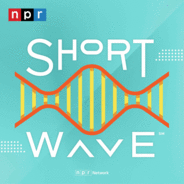Eating disorders are complicated illnesses that skyrocketed among teenagers during the COVID-19 pandemic. Pediatrician Eva Trujillo says they "literally rewire the brain," decrease brain size, and make it harder to concentrate and to regulate emotions. Malnutrition can slow the metabolism, impact bone density and even lead to cardiac arrest. But Eva says, with the right treatment, people can also recover fully. She's the president of the International Association of Eating Disorder Professionals and co-founder of Comenzar de Nuevo, a leading treatment facility in Latin America. Today on the show, host Emily Kwong talks about the physical and mental impacts of eating disorders with Dr. Trujillo and Moorea Friedmann, a teen mental health advocate and host of the podcast Balancing Act. Plus, how to recover in a world steeped in diet culture. Want us to cover more mental health topics? Tell us by emailing shortwave@npr.org! We'd love to know what you want to hear from us! Listen to every episode of Short Wave sponsor-free and support our work at NPR by signing up for Short Wave+ at plus.npr.org/shortwave.Learn more about sponsor message choices: podcastchoices.com/adchoicesNPR Privacy Policy

Wissenschaft & Technik
Short Wave Folgen
New discoveries, everyday mysteries, and the science behind the headlines — in just under 15 minutes. It's science for everyone, using a lot of creativity and a little humor. Join hosts Emily Kwong and Regina Barber for science on a different wavelength.If you're hooked, try Short Wave Plus. Your subscription supports the show and unlocks a sponsor-free feed. Learn more at plus.npr.org/shortwave
Folgen von Short Wave
1376 Folgen
-
Folge vom 23.07.2025Eating Disorder Recovery In A Diet Culture World
-
Folge vom 22.07.2025Will Federal Budget Cuts Affect Space Science?Earlier this year, the White House proposed a nearly 24% cut to NASA's 2026 fiscal year budget — the largest in the agency's history. The trims are largely aimed at the NASA's fundamental science research and would halt science that has already been partially paid for, like the Mars sample return and the Nancy Grace Roman Space Telescope. Many scientists and policy experts are also worried that the reduced funding would cause a scientific brain drain. But within the last month, Congress has started to discuss appropriations packages that may not severely contract the budget after all. So, in this episode, Regina reports on the important hypotheticals: What programs might be affected? Are these cuts likely to happen? If so, when? Want to hear more stories about space and policy? Let us know at shortwave@npr.org.Listen to every episode of Short Wave sponsor-free and support our work at NPR by signing up for Short Wave+ at plus.npr.org/shortwave.Learn more about sponsor message choices: podcastchoices.com/adchoicesNPR Privacy Policy
-
Folge vom 21.07.2025Sea Camp: Is Better Human Health Hidden In The Sea?For this week's Sea Camp, we're diving below the ocean's surface to explore the sunlight zone, the portion of ocean that's 0-200 meters deep. Here, we zoom in on some spineless inhabitants envied for their "superpowers." Marine biologist Drew Harvell tells us about stealthy sea slugs, sea stars with super strength and life-saving sponges. Also, exciting news!! WE HAVE A NEWSLETTER! It lets you go even deeper with the marine research each week of Sea Camp. Sign up here!Plus, check out the comic we commissioned to accompany this episode!Want to hear more stories about underwater marvels? Email us and let us know at shortwave@npr.org.Listen to every episode of Short Wave sponsor-free and support our work at NPR by signing up for Short Wave+ at plus.npr.org/shortwave.Learn more about sponsor message choices: podcastchoices.com/adchoicesNPR Privacy Policy
-
Folge vom 18.07.2025Congress has voted to eliminate government funding for public mediaAct now to ensure public media remains free and accessible to all. Your donation will help this essential American service survive and thrive. Visit donate.npr.org now.Learn more about sponsor message choices: podcastchoices.com/adchoicesNPR Privacy Policy
